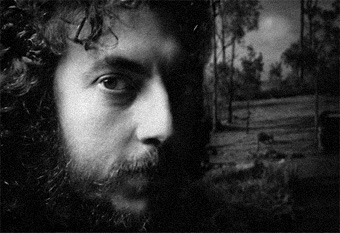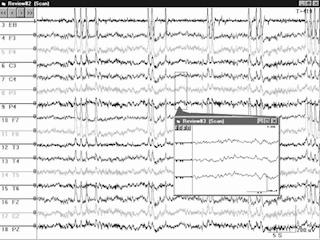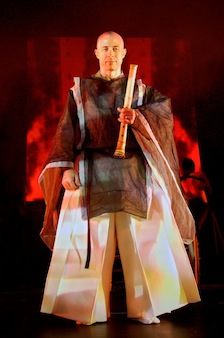
There was an era when Paul Wilson's Calm Centre was one of the best known meditation centres on the planet.
You might have read about it in London, Rome, Madrid, Sydney or Auckland. You might have seen interviews or advisory videos that were filmed there. You might have heard about the dozens of meditators who were suspected of gathering there under the cover of darkness.
Yet ... if you were wandering around the quiet, suburban Sydney neighbourbood where it was rumoured to be, you'd probably walk right past. Who would have guessed that this small, two-storey dwelling where it was all happening? Or not happening as the case may be.
The History of the Calm Centre
In 1983 the Calm Centre was established in the suburbs of Sydney Australia by Paul Wilson. It was a small meditation centre which, in contrast to other resources available at that time, was unaffliated with any particular movement or philosophy. Its secular approach to meditation was centred on a constantly-evolving, but generic practice that Wilson called The Calm Technique. It was conducted on a face-to-face basis, at no charge.

Calm Centre director, Paul Wilson (circa 1984) was one of a small number of meditation teachers who followed a tradition of teaching without charge - as their teachers had taught them.
During this period Wilson’s handbook, The Calm Technique, was published by the Australian publisher, Greenhouse. As a surprise to almost everyone involved, it became a mainstream success.
(Until that time, meditation was a fringe activity, sometimes practised in religious or 'alternative' environments, but never really taken seriously in everyday circles. So much so that on a US promotional tour in the early nineties, Wilson was asked to refer to the topic as "relaxation" rather than meditation - at least in the less sophicsticated cities - so that it would not alarm religious groups or followers.
As the world's first mass-market book on meditation, The Calm Technique enabled Wilson's secular approach to become a media-oriented practice rather than face-to-face teaching in a physical centre.
Calm Centre research
The Calm Centre then refocused its efforts as as a research facility. And even though Wilson did have some involvement with orthodox medical research, such as being on the board of a large research foundation, the Calm Centre's methods were undisciplined and free-wheeling.
Some of the resultant insights were profound, others were eccentric, but they formed the background to further Paul Wilson works.
The Calm Centre in sound
 The Centre's experiments with electroencephalograph (EEG) explored the impact of meditation on long-term meditators, determined what practices were useful and what were just historic artefacts, then used neurofeedback methods to reproduce the benefits in easily accessible ways.
The Centre's experiments with electroencephalograph (EEG) explored the impact of meditation on long-term meditators, determined what practices were useful and what were just historic artefacts, then used neurofeedback methods to reproduce the benefits in easily accessible ways.
As an extension of the EEG experiments, the Calm Centre began exploring ways of reproducing "meditative states" via computer programs and sonic entrainment. Combinations of light and sound frequencies could produce a meditative-like state in a passive user, a discovery that led to the development of a portable neurofeedback device called the Little Calm Machine.
Brother of the author, the composer Colin Wilson, developed the sound entrainment technology that initially went with the Little Calm Machine. (This technology involved in that is now widely used in a wide range of products and offerings, NONE of which is sold, promoted or endored by the Calm Centre. Read into that what you will.)
During this phase composer, Colin Wilson, found that similar results could be achieved using musical harmonies alone, without the intrusion of electronic devices.
 Shakuhachi Grandmaster Riley Lee
Shakuhachi Grandmaster Riley Lee
His experiments in the use of musical "entrainment" harmonies led to a number of recording ventures that teamed leading classical artists such as shakuhachi grandmaster, Dr Riley Lee with traditional artists such as didgeridoo player Matthew Doyle, supported by a band of contemporary musicians. The resultant 12 albums included titles such as Masters of Calm and Alone. It also involved a best-selling album with Paul Wilson (speaking) and musicians guided by Jim Reece - something thousands of people, including Paul Wilson himself, are still trying to drive out of their minds.


